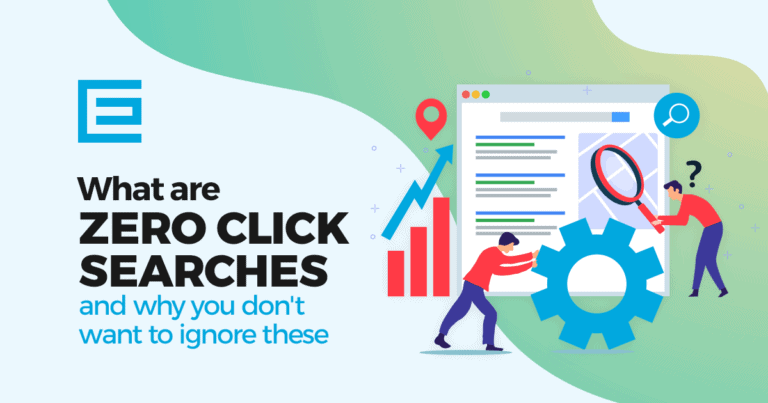A business owner’s worst nightmare is to lose website traffic, online leads, and prospect calls because they lost their great position in Google search for their most important keyword when they launched their new website. When rebranding and relaunching make sure your web team does things right.
Rebranding Your Business or Just Changing Your Domain Name but Scared to Lose Ranking on Google?
We are glad that you are here because we don’t want you to lose your hard-earned search engine position when you launch your new website under a brand new domain name.
We listed the most important steps that you must follow when you change your company name, website URL, business address, phone number, add an SSL certificate to make your site more secure, move to a new hosting company, or launch a brand new website.
- 1Pick a New Company Name with an Available, Matching Website Address
- 2Create a New Logo
- 3Pick a Better Hosting Company
- 4Create a Demo Site to Test the Changes
- 5It’s the Perfect Time to Restructure Your Website
- 6Update the Company Name Throughout the Website
- 7Update the Company Name and Logo in Your Autoresponders and Form Mailers
- 8Reoptimize Your Website
- 9Update Home Page Content
- 10Write a Blog and Press Releases Announcing the New Company Name
- 11Check and Improve the Mobile Experience
- 12Improve Site Speed
- 13Make Your Site Secure with SSL
- 14Make Sure Your Website Is Accessible
- 15Setup Permanent 301 Redirects
- 16Launch Your Website Very Carefully
- 17Watch for User Generated Content Especially for Ecommerce Websites
- 18Don’t Forget to Turn On Search Engines
- 19Update Your Tracking and Analytics Tools
- 20Update Your Social Media Profiles with the New Company Name, URL, Logo, Profile Images
- 21Change Your Business Name and Website Address in Directory Listings
- 22You Got a New Name? Announce It to the World!
- 23Search and Fix the Rest Manually
- 24Update Your Links in Your PPC Ads
- 25Update Your Landing Pages and Other “Hidden” Content
- 26Monitor Your 404 Clicks and Broken Pages
Pick a New Company Name with an Available, Matching Website Address
When you came up with your perfect company name, make sure the domain name is available to purchase, ideally the .com version but it might make more sense to buy a different extension for certain industries. Technology and SaaS companies like .io extensions. Even if you are not 100% sure about the company name, just buy it. It costs about $10 to purchase a domain name that can be gone by the next day if you think too long about it.
The right domain name can save you thousands of dollars in effort spent trying to rank higher in search engines and get free traffic. Select a catchy URL to get more clicks. If you find an available domain that is short and also includes your most important keywords, that would be great.
Also, go to your local Secretary of State website to verify the legal name is also available. If you already have a legal name but you want to rebrand your business, just get a DBA, doing business as. So, you can continue all the legal aspects of your business just like before.
If you got a DBA make sure to go to your bank to report it. So, you won’t have issues when deposit checks or receive ACH payments. Also order new checks, business cards, and the list goes on.
Make sure your new domain name has a clean past. You don’t want to purchase a domain name that used to be associated with spam or other negative notoriety. You can check this by visiting “Wayback Machine – Internet Archive” and doing a search for your domain URL. Also, do a web search for your domain name. Just in case there are some questionable results.
If you have access to a backlink checker. You can scan the domain to see if a previous owner built a lot of spam links to it. If they have, you most likely don’t want to deal with disallowing a bunch of low-quality links at the start of your project. It could affect your ability to get your brand new website out from Google’s sandbox.
Create a New Logo
To make it easy for your web developer, try to create a new logo with a similar aspect ratio and colors, otherwise, prepare for a website redesign project that might cost you more than you originally wanted to spend on your “simple” rebrand project.
Pick a Better Hosting Company
Website reliability, uptime, and speed are also important ranking factors. If you are not 100% satisfied with your website hosting company, it’s the best time to make a switch.
An ideal hosting environment uses a recent version of PHP, has the ability to create a staging environment, daily backups, and easy restoring.
You don’t want all your hard work to be hamstrung by a bad hosting environment slowing down your website or crashing when you get an influx of site visitors.
Create a Demo Site to Test the Changes
Don’t just blindly ask your web developer to upload your new logo to your existing website without seeing and approving it beforehand.
Ideally, you create a copy of your website and place it in a staging environment where it is not available to the public but you and your developer can review changes before making them live. Upload your new logo to your staging website. If you are looking for the rebrand to be light in effort, make sure your designer creates a new logo with a similar aspect ratio and colors as your previous logo. Big changes in the logo’s aspect ratio or color scheme could lead to larger changes needed throughout your website.
Change the old company name everywhere and adjust the content according to the changes. We would recommend keeping your old name on the copy for a while so people and search engines can recognize easily it’s still the “same” company with a new business name. A good example is “TheeDigital, formerly known as TheeDesign, your favorite web design agency in Raleigh, North Carolina”.,
If you decide to move your website to better website servers, then make sure you set up the demo site on the new server. Different servers can render the same code slightly differently. Especially when upgrading from an older version of PHP. This is why it’s important to test your site on the same server as it will run on after launch.
It’s the Perfect Time to Restructure Your Website
During the years most websites gain additional pages, sections or there are discontinued services and products. The not too well-planned changes can cause some chaos and mess on your websites. Even if you believe the website is very well organized, you might offer new services or products for your customers or want to highlight something else for your visitors.
It’s the perfect time to rethink and reorganize your website with the expected future offerings and features in mind.
A good site structure provides your site with Sitelinks. Sitelinks are a listing format in Google Search that shows your site’s main page along with several internal links. It can increase clicks to your website from search engines. Take the following steps when restructuring your website.
Plan a website hierarchy: A hierarchy resembles a family tree, the home page is at the top. Underneath it is pages broken into categories which can be further broken into different sub-categories.
Update the Company Name Throughout the Website
Change the old company name to the new one but keep the old brand name on at least a few different pages
Change the old company name everywhere and adjust the content according to the changes. We recommend keeping your old name in the copy for a while so people and search engines can easily recognize it’s still the “same” company with a new business name and URL. A good example is “TheeDigital, formerly known as TheeDesign, your favorite web design agency in Raleigh, North Carolina”.
Update the Company Name and Logo in Your Autoresponders and Form Mailers
Don’t forget to change the company name and logo in your “thank you” emails and autoresponders as well.
Reoptimize Your Website
You probably want to make sure your prospects still find you for the old company name and the new one too. You also want to make sure you rank high for your most important keywords.
Use both company names in your content, meta titles, meta descriptions, and image ALT text. Fix duplicate title tags and duplicate meta descriptions. Consider improving or pruning underperforming content. Fix broken links.
Update Home Page Content
You most likely will have a new tag line, featured offerings, and you most likely want to announce there was a brand change on your home page. So, your existing customers, prospects, and the followers of your business will know they are in the right place.
Write a Blog and Press Releases Announcing the New Company Name
Go a step further and write a detailed blog about the changes. Explain the reasons you rebranded your company and the benefits that your customers will enjoy under the revamped organization.
Releasing a Press Release that’s picked up by many state and national papers will help people searching for your previous brand name easily find out that your company name changed and why. It serves as a trail for search engines and past clients to easily find you again.
Check and Improve the Mobile Experience
There are opportunities to improve even the best websites. You must check the visitor experience not just on desktops and laptops but on mobile and tablet devices as well, horizontal and vertical layout on different operating systems and browsers too. A new logo could negatively affect the mobile experience and your developer must verify and improve if needed.
Use a tool like Google’s Mobile-Friendly Test to ensure your web page is mobile-friendly.
Improve Site Speed
If your site is slow and your budget allows you to invest in some speed optimization activities, ask your developer to improve your website speed.
GTmetrix is a free website that can help you identify any speed issues.
Make Your Site Secure with SSL
If your website wasn’t running on a secure, HTTPS:// URL we strongly recommend to do it now. It’s also an important factor of search engine ranking.
Make Sure Your Website Is Accessible
If your website is not ADA compliant, it’s the best time to take care of that too. Making your website accessible to everyone increases the number of possible visitors, users, or customers the site can attract; it may provide significant financial benefits, and accessibility is the proper thing to do legally and morally.
A tool like ADA Website Compliance Monitoring can make this easy and cost-effective to accomplish.
Setup Permanent 301 Redirects
You want to make sure that your visitors will land in the new version of your pages when they find an old URL from a bookmark, article, or Google search.
If your previous marketing agency or developer setup redirects previously, make sure you update those as well. Google doesn’t like chain redirects and it can also cause technical issues as well.
Also, don’t forget to set up new human-friendly and XML sitemaps according to your new site structure. Some decent WordPress plugins can automatically generate sitemap.xml and HTML sitemaps too.
Launch Your Website Very Carefully
It’s not just a button to push and you’re done. If your website is running on a content management system like WordPress or Drupal you definitely don’t want to lose the recent changes that you did on your marketing website since you created the demo site. If you have an online store like WooCommerce or Magento, you definitely don’t want to lose recent customer registrations and their order history. Make sure you copy the code and content changes but leave the form submissions, user, and order tables alone in your database. In short, don’t overwrite user-generated content like user passwords, user names, billing information, addresses, etc.
Test your form mailers to make sure you get website submissions. It’s also crucial your third-party connections are properly set up, e.g. your favorite CRM and marketing automation tools like HubSpot, Salesforce, Pardot, MailChimp or ERPs for ecommerce websites.
You often need to update your URLs in third party tracking tools too like Google Analytics, HubSpot Analytics, call tracking tools, etc.
Watch for User Generated Content Especially for Ecommerce Websites
We mentioned this previously but wanted to dedicate a section for visitor generated content. Don’t overwrite product, customer, user, coupon, etc. tables that contain user-generated content! We see this often when customers come to us from inexperienced developers and complain about lost customer accounts, order history and have to ask clients to register again or update their passwords before their first login to the new website.
Don’t Forget to Turn On Search Engines
If you use a content management system like WordPress, make sure you enable search engines. Also, make sure your robots.txt file doesn’t block search engines.
Update Your Tracking and Analytics Tools
Change your domain name in Google Analytics, Google Search Console, Google My Business, and all other tracking tools.
Update Your Social Media Profiles with the New Company Name, URL, Logo, Profile Images
It’s very important to have the right URL everywhere on the web, especially on busy social media profiles. If you did your 301 redirects properly, the browser still sends you to the right page but your website will benefit from a real URL more than a redirected old link that technically doesn’t exist anymore. It’s also a Google ranking factor and you want the real link pointing to your website to have a higher impact on search engine ranking.
Change Your Business Name and Website Address in Directory Listings
Try to find a tool that can do quick mass updates to make these changes immediately after you published your new site under a new domain. The sooner you make these changes the better.
You Got a New Name? Announce It to the World!
Probably the very first thing you want to do after confirming the new URL is running, all links are redirected properly, and all features work as expected. Is to announce your brand new name and domain name on social media and everywhere you can.
Email newsletters and press releases are also very important. Send your visitors notes with links pointing to your blog further explaining the reasons for the changes.
Search and Fix the Rest Manually
After you “believe” you changed your name and link everywhere on the web, just make a Google search for the old company name and links. You most likely will be surprised how many websites have content pointing to your old domain name. If you see a large number of websites with backlinks, that means your marketing agency did a great job promoting your business online.
You might not like it but some of these old links will never be corrected but your goal is to contact every single website owner to ask them to update their website to point their content to your new URL and web pages.
Update Your Links in Your PPC Ads
It’s often overlooked but another important item that is an absolute must is to update your links on any PPC Ads you have running.
Update Your Landing Pages and Other “Hidden” Content
You might have “hidden” landing pages and other content that is not easy to find. Make sure you know your website and update the content everywhere, even on the hard to find pages.
Monitor Your 404 Clicks and Broken Pages
Install a 404 plugin to find links that visitors might click on and end in a page not found. You definitely don’t want broken links on your website. Find them and fix them.
Are You Planning to Rebrand Your Business but Afraid to Lose Ranking and Leads?
It’s probably one of the most important projects you want to get right the first time to maintain your website ranking and the volume of your online leads. If you are looking for professional assistance, please call 919-341-8901 or schedule a time to talk with one of our website rebrand experts today.
Tags: Our Favorites







